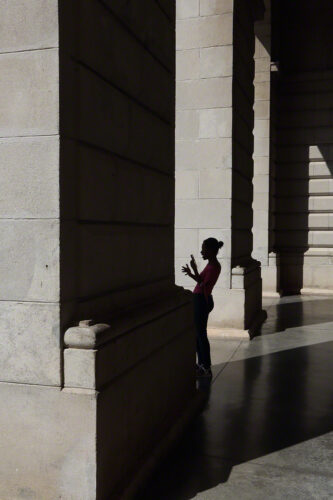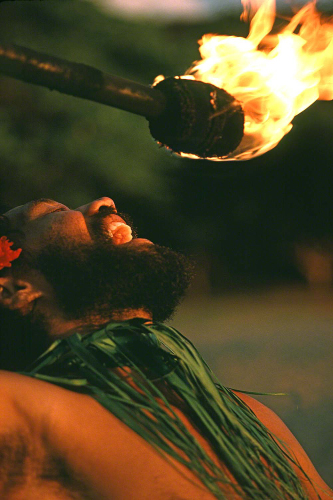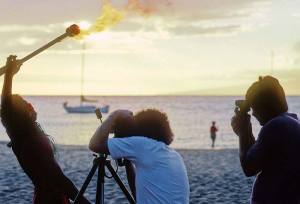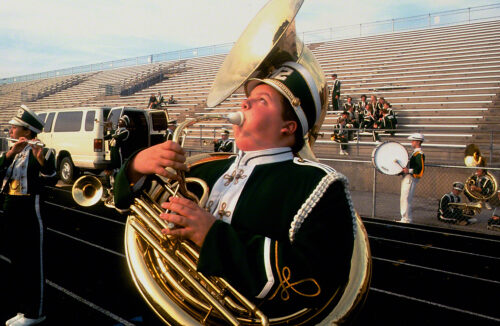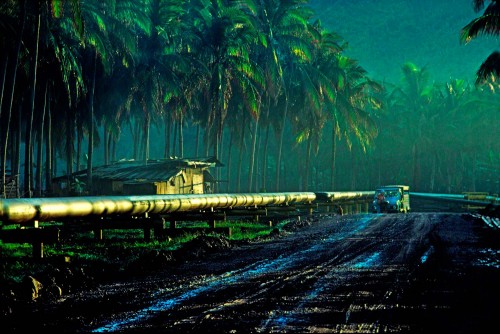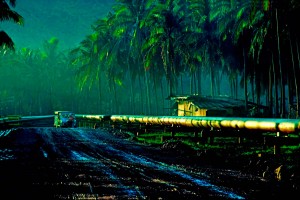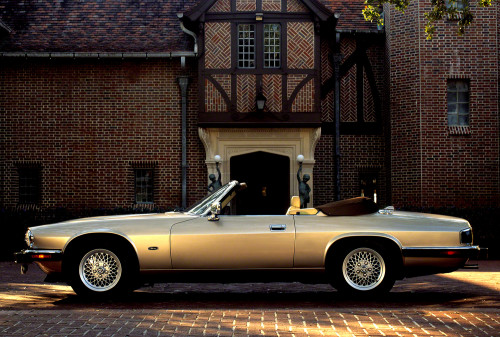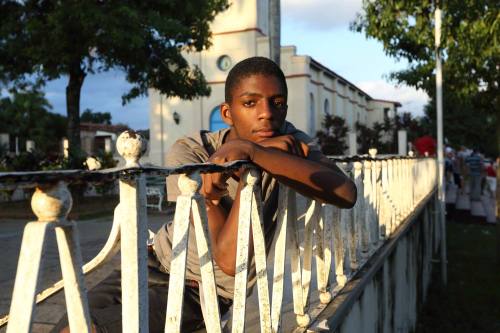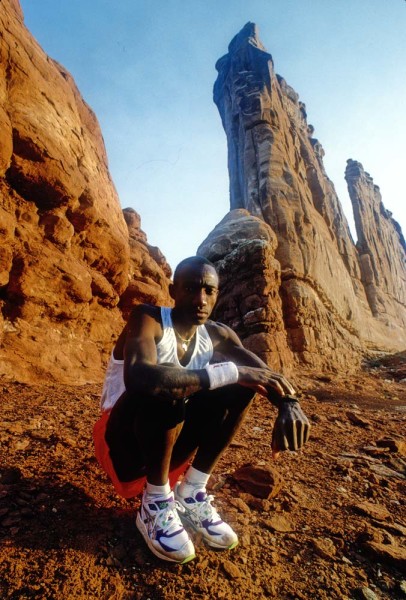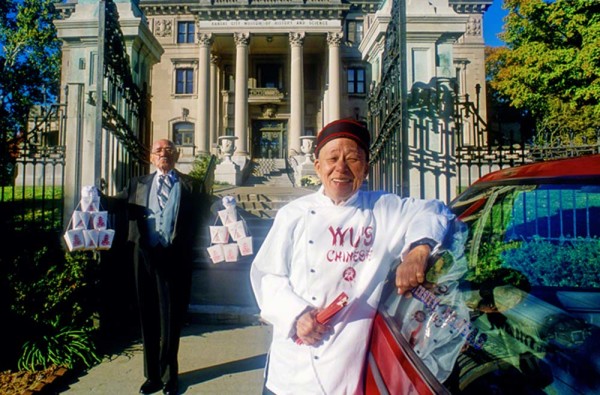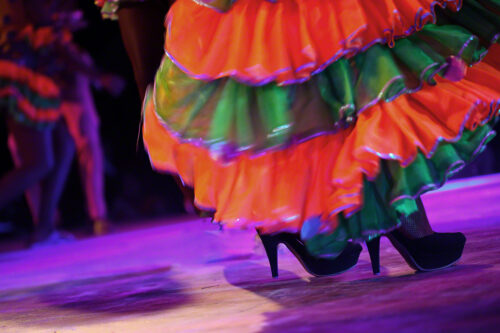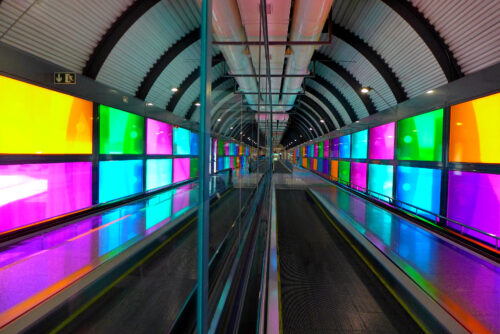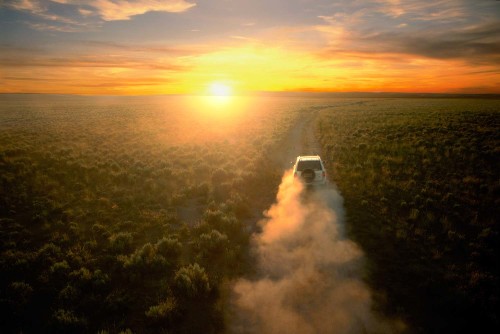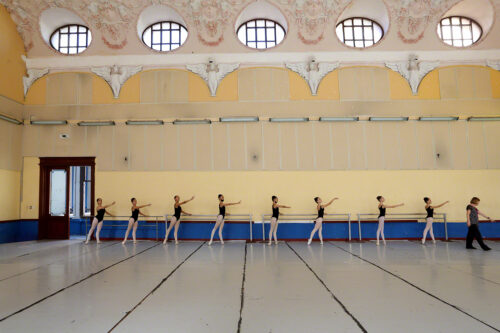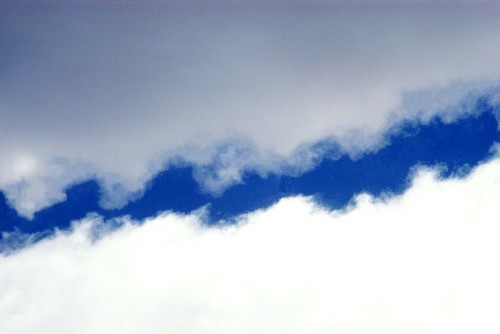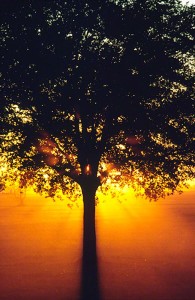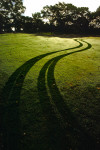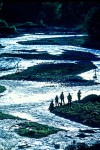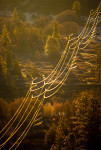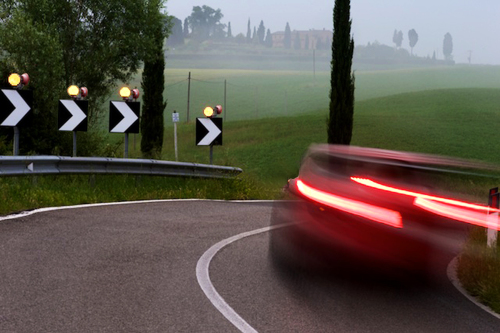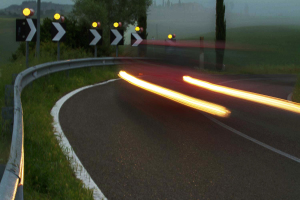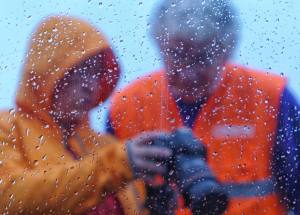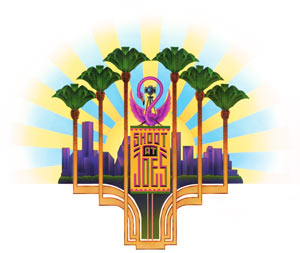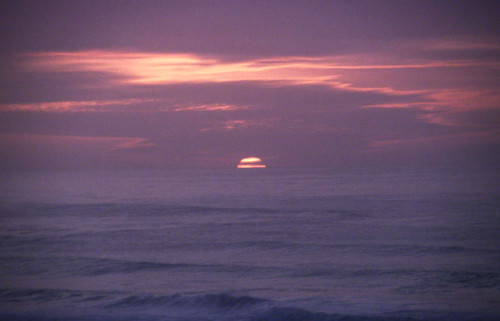
What rule says you can’t center the horizon line?
Once again I want to start off by saying that there’s no set rule as to where to put that pesky horizon line; run from anyone that tells you any different.
There’s three basic choices:
Putting the horizon high in the frame will accentuate whatever you put in the foreground while at the same time intensifying the feeling of distance. When I talk about this to my online class with the BPSOP, and in my “Stretching Your Frame of Mind” workshops I conduct around the planet, I always warn my fellow photographers that when they tilt the camera up or down the vertical lines close to the edge of the frame will bend either in or out.
One way that sometimes corrects that distortion is to switch to a wider lens so the tilting up or down is at a minimum. Switching to a wider lens will also help keep everything in focus from the foreground to the background. Another way to help with the focus is to shoot from a higher POV and then when you tilt the camera down it will extend the DOF.
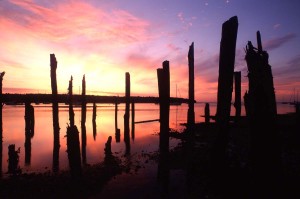
Breaking through the centered horizon line.
Putting the horizon line low in the frame will do two things. It will bring attention to a dramatic sky, and it will create a feeling of being small in the scheme of things…as in the vastness of the world around us. I will often put my subject in the bottom right corner of my frame to give the feeling of being alone and small in relation to the infinite reaches of the sky above. Putting my subject in that right corner will also generate Visual Tension. Btw, if the sky is not dramatic and just blue, the viewer will quite possibly tire of it and move along.
Putting the horizon line in the middle of the frame is to many, breaking a cardinal rule. These are the people you want to stay away from. There are times when it will work, and it just all depends. One never knows until it’s tried, and I’m the first one to encourage trying. As I always told my kids…”Color outside the lines”.
Putting the horizon line in the middle is often used when you’re reflecting the image in some body of water. It will change the dynamics of your composition by becoming more of a graphic/symmetrical statement; showing the subject in a mirrored reflection. It will also generate Visual Tension. In my classes we work a lot of ways to create Visual Tension, and showing a subject and it’s reflection is one of the ways.
When you’re reading all the rules to becoming a good photographer, and I say this lightly, placing the horizon smack dab in the middle is high up on the list. Btw, who was the first person to tell us that was a real “no-no”????? I think he or she has dressed up in their parent’s clothes and are playing hide-in-seek!!!
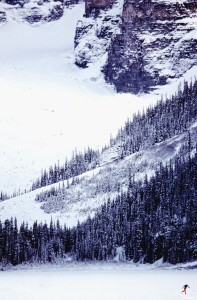
A low horizon line.
I say it does have merit. Placing your horizon line in the middle can have two effects. first, it can look like someone has spliced two photos together. Second, it can leave your photo non-moving and static. Non-moving in the sense that its important to move the viewer around the frame giving him lots of things to discover. That way he’ll stick around longer.
One way to work around centering the horizon line is to use elements to break the horizon. In effect, it can tie the two parts together.
In any event, what’s important to think about is one of my favorite “personal pearls of wisdom”…consider the scene and its outcome. What message are you trying to get across? Simply put, are you emphasizing the sky or the foreground…or neither one?
There is another way to solve this dilemma, and this will resolve any nightmares you might endure from worrying about where you put that last horizon line. Don’t show the horizon at all. If the centers of interest, or the main subject is below the horizon line, then it makes life so much easier. This is really a good idea when the sky is overcast.
Visit my website at: www.joebaraban.com, and follow me on Instagram www.instagram.com/barabanjoe. Check out my workshop schedule at the top of this blog. come shoot with me sometime.
JoeB
